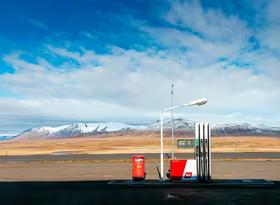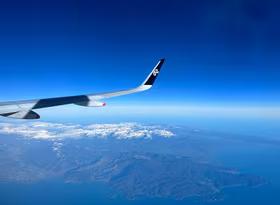How quickly will international travel return?
One of the starkest contrasts of pre- and post-pandemic life is how much less connected we are with overseas countries. International travel was obliterated almost everywhere in about a month when COVID-19 began its spread across the globe. Airline companies slashed their capacity in response, sending surplus planes to the desert where they won’t depreciate as quickly. The domestic tourism boom has helped local airline traffic to recover, although our ongoing isolation continues to negatively affect the tourism sector. Overseas evidence shows that as travel restrictions have eased, people are keen to get back out and explore, but activity has not returned to pre-pandemic levels yet.
The return of flight capacity varies across the globe
The initial hit on air transport from COVID-19 was much the same across different countries, as the government restricted people’s movements and tried to contain the spread of the virus. However, different parts of the globe have seen a faster return of air transport volumes, depending on the timing of subsequent outbreaks and how restrictive different governments have been. Europe suffered long and punitive restrictions on economic activity for much of 2020, but airlines have since been gradually reinstating flight capacity (see Chart 1). Although European flight capacity is 143% higher than in June 2020, it is still 23% below capacity compared with December 2019. For comparison, flight capacity in the Southwest Pacific (Australia and New Zealand) was down 43% in December 2021 compared with December 2019.
North America has seen a much faster return of flight activity, with capacity in December 2020 sitting 79% higher than in June 2020 (June is their summer and usually has higher capacity). North America’s flight capacity is now only 14% below pre-pandemic levels. Similar to China, the US’s large domestic population has helped air traffic recover more quickly than in smaller countries.
How quickly will international travel resume – when allowed?
Overseas travel data shows that, despite ongoing COVID-19 outbreaks such as Omicron, there has been consumer interest to resume travel. For example, flight capacity between the USA and Mexico was actually at higher levels in December 2021 than before the pandemic. Mexico currently has loose border restrictions, which has helped attract American tourists, rather than them having to deal with the stricter travel requirements of showing negative COVID-19 tests.
The Trans-Tasman bubble also showed that travel between New Zealand and Australia recovered reasonably well, considering the uncertainty. In May and June 2021, arrivals of Australian tourists into New Zealand rebounded quickly to 53% of pre-pandemic levels.
Pressure at the borders
It is hard to be sure when restrictions on travel into New Zealand will be relaxed. The government’s announcements about easing MIQ requirements in November were made based on Delta, but the emergence of Omicron means that those timelines will not be followed. Furthermore, those changes were still highly prohibitive for tourists to come to New Zealand, with people arriving still required to undergo a week of isolation. There has been no indication from the government under what conditions they would start reopening borders without any sort of quarantine.
However, as New Zealand slips into the minority of countries that aren’t relaxing travel restrictions, pressure will mount to reopen the borders. We have done well to avoid large case numbers of COVID-19 thus far, but delaying the inevitable much longer is like ripping a Band-Aid off slowly, especially as vaccination rates are high and booster shots of the most vulnerable are already underway. There will come a point when keeping the virus out at all costs hurts society more than accepting it will become endemic within New Zealand.













